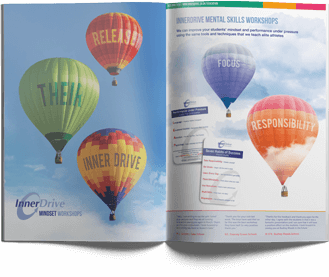Because of lockdown, student motivation has taken a hit. One study that surveyed 11,000 students found that only 34% of students felt motivated to learn remotely.
With their normal exams cancelled, many students are left feeling uncertain and stressed. Combined with the fact that learning from home can present many distractions, it can be quite difficult to keep students focused and engaged throughout the lesson.
Since mind-wandering has been linked to poor academic performance as it disrupts working memory, you may be wondering how to make your online lesson plans work better for you. Here are seven ways.
7 ways to grab (and keep) your students’ attention online
Get active
The World Health Organisation suggests that adults, on average, should do about 22 minutes of physical activity per day. Not only has research found that people who regularly exercise report increased self-esteem, enhanced mood and lower stress levels, but a study using school children found that those students who engaged in physical activity had better concentration and were more focused.
Depending on where students are in the UK, they may only be allowed to go outside for 1 hour of exercise a day. Due to this limited ability to exercise, students may feel tired, less alert, and mentally drained. This is why schools and colleges should encourage students to do some physical activity at least once a day.
Gamify activities
Sitting in front of a computer screen all day can be boring. One way to get students engaged is to a lesson with a warm-up task or game. Whether it be a Kahoot quiz, trivia competitions, debates or class stories, adding a game element to your lessons is a great way to get students warmed up and engaged. It also reminds them that learning can still be fun, even at home.
Peer Teaching
One study found that students performed 12% better on a test as well as remembering more of the material when they think they will be expected to teach the lesson content to their peers. The researchers suggested this was because students pay more attention in class and put more effort into engaging with the lesson when they believe they are in charge of other people’s learning.
So, as a homework task, allocate different parts of a topic to each of your students and ask them to make a 5-minute presentation on their section. Depending on the class size, allow 1-2 lessons for your students to present their findings by sharing their screen on Zoom or Microsoft teams. This allows your students to take a more active part in their learning.
Play Bingo
One way to keep students engaged throughout the lesson is to play Bingo. Provide students with a grid of keywords that you’ll be using at some stage in the lesson. Every time you say one of the keywords, students cross off the word on their worksheet. The first student to type ‘Bingo’ wins. By adding a competitive element to your lessons that requires students to pay attention, they’ll be more likely to remember the information covered.
Regularly check in with students
Make sure you’re regularly checking in with students to see how they are coping with lockdown and their learning. Although this can be time-consuming, it’s important that students feel supported and that they have someone they can talk to. Especially students with deprived or vulnerable backgrounds.
If you’re particularly worried about a student, it may be good to check in with a parent or guardian to see if anything may have happened in their personal lives.
Daily Quiz
Rosenshine’s first principle of instruction recommends that teachers should time at the start of a lesson to review previous learning. By taking a short amount of time to practice retrieval, students will perform better academically. This is because the principle is about harnessing the ‘Testing Effect’ which has been consistently proven to be one of the most effective revision techniques a student can utilise to enhance their memory recall.
So, at the start of a lesson, send students a link to complete an online quiz. Not only will they develop a more in-depth understanding of class content but will feel more confident in their academic ability. And from a teacher’s perspective, it’ll allow you to assess student progress and quickly identify whether you need to re-explain a topic.
Slow down
As a teacher, you may find yourself racing against the clock to cover all the content you need to the lesson. And now with lockdown, teachers report working 60-65% more hours to keep up with the demands of distance learning. With so much to do, it can be quite difficult to understand why taking the foot off the pedal is a good thing.
As our cognitive load is quite small, the transfer of memory from our short-term memory store to our long-term memory needs time to be effectively stored. So, if you’re constantly presenting students with new information without allowing them any time to process it, they may get completely overwhelmed and tune out or remember the wrong stuff.
FINAL THOUGHTS
Maintaining focus whilst learning at home can be difficult. It can also be difficult for teachers to find ways to keep students engaged when the lesson consists of students staring at a screen in their own home. By implementing a few of these strategies into your online lessons, hopefully we can help keep students’ focus for longer, and as a result help them maximise their learning time.







